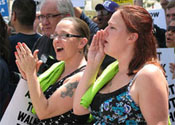 Listen to the audio story from Annenberg Radio News:
Listen to the audio story from Annenberg Radio News:
Dan Hindman has an anniversary this week – with Walmart.
“I’ve worked at Walmart… on the 17th, that’s three years,” he said. To support his son and put himself through school, “I do a little of everything. I do a little LP sometimes, I work electronics, I play management at times… I do it all, dude.”
But despite all this history, he’s not happy about the stores springing up in Los Angeles.
“I don’t live around Chinatown, but if I did, I would tell them definitely not to open up,” Hindman said. “Because I feel if you’re going to open up, you’ve got to treat your people correctly. Walmart doesn’t. Things they promise, they don’t follow through with it. I’ve been promised interviews with different departments. I haven’t seen an interview yet.”
Hindman and about a hundred other Walmart workers met in Los Angeles this week at a national Making Change at Walmart conference. There, they put together a list of demands to present at the Baldwin Hills Crenshaw Plaza Walmart today.
The protesters say their schedules are irregular and they’re not earning as much as Walmart promised. They’re disrespected at work. They want higher wages, guaranteed health insurance and Walmart’s promise that it will invest profits in communities.
But Michael Jones, CEO of the Crenshaw Chamber of Commerce, says that’s what Walmart already does in South L.A. When the store opened about a decade ago, it created more than 500 jobs, most of which went to residents.
“That had a tremendous, tremendous impact. Before that, there were people that were out of work, and they made it happen,” Jones said. “I understand people will talk about unfair wages and things like that, but compared to what? If someone is unemployed, and they’re getting paid even minimum wage, is that an unfair wage? We’ve had a tough, tough economy. People can have some dignity .”
In a statement released today, Walmart said they do offer competitive pay and affordable benefits.
But the workers leaving the conference in L.A. today plan to air their grievances at Walmarts all over the country.









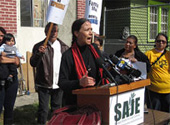 There’s a house on East Adams Boulevard in South Central Los Angeles where broken windows are covered by cardboard and wrapping paper. Cockroaches crawl in water glasses and a ratty extension cord connecting a generator to a bare fluorescent bulb is stapled to the ceiling.
There’s a house on East Adams Boulevard in South Central Los Angeles where broken windows are covered by cardboard and wrapping paper. Cockroaches crawl in water glasses and a ratty extension cord connecting a generator to a bare fluorescent bulb is stapled to the ceiling.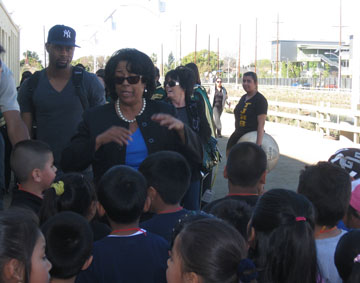 Ninth District Councilwoman Jan Perry greets 49th Street Elementary School students at South L.A. Wetlands Park.
Ninth District Councilwoman Jan Perry greets 49th Street Elementary School students at South L.A. Wetlands Park.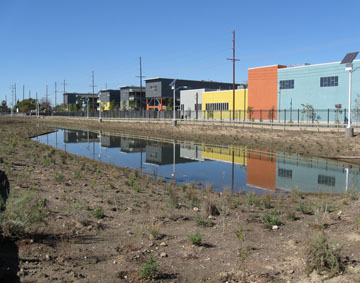 The wetlands cover 9 acres of land along 54th Street in South L.A.
The wetlands cover 9 acres of land along 54th Street in South L.A.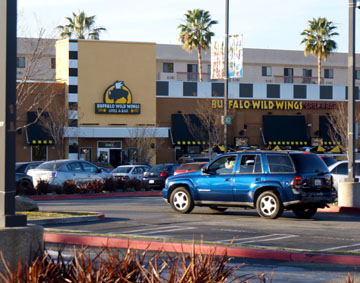 California employees and entrepreneurs were heartened by last month’s revelation that December marked a fifth consecutive month of a declining unemployment rate statewide. Los Angeles’ 8th City Council District, one of the poorest in the city, met the news with guarded optimism.
California employees and entrepreneurs were heartened by last month’s revelation that December marked a fifth consecutive month of a declining unemployment rate statewide. Los Angeles’ 8th City Council District, one of the poorest in the city, met the news with guarded optimism. 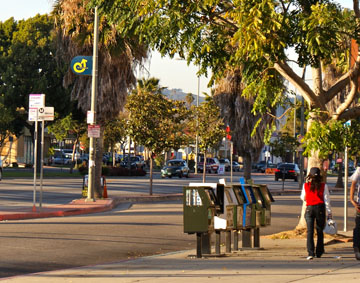 But Parks sees these jobs as the gateway to better employment down the road. “Every job is not a career,” he said. “Every job is not a life-long job. You move to another job. You develop.”
But Parks sees these jobs as the gateway to better employment down the road. “Every job is not a career,” he said. “Every job is not a life-long job. You move to another job. You develop.”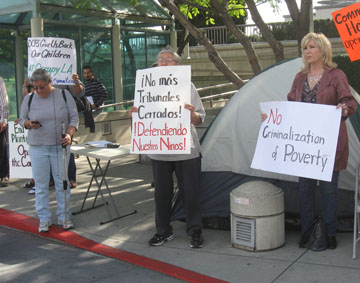 Protestors outside Children’s Court in Monterey Park on Tuesday want access to the hearings taking place inside.
Protestors outside Children’s Court in Monterey Park on Tuesday want access to the hearings taking place inside. Over the last six, LA Live’s developers have unveiled restaurants, clubs, stages and walking space south of downtown. In six more, they hope to add another draw: the National Football League.
Over the last six, LA Live’s developers have unveiled restaurants, clubs, stages and walking space south of downtown. In six more, they hope to add another draw: the National Football League.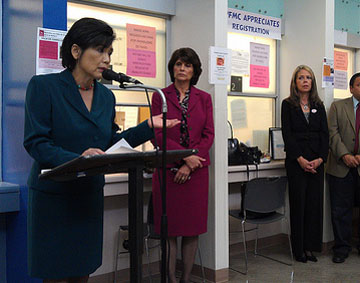
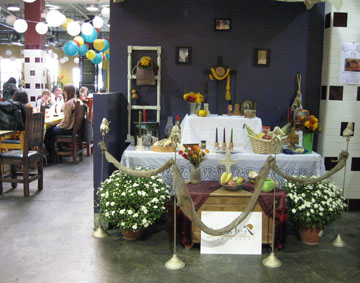 Dia de los Muertos fills Los Angeles with altars, sugar skulls and yellow marigolds on the first two days of November each year. But recently, the Mexican holiday has become increasingly popular.
Dia de los Muertos fills Los Angeles with altars, sugar skulls and yellow marigolds on the first two days of November each year. But recently, the Mexican holiday has become increasingly popular.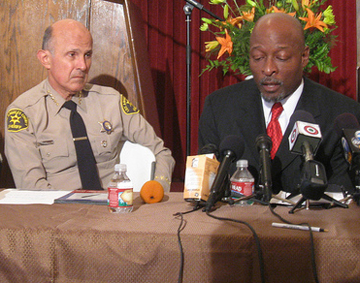 Some Los Angelenos are beginning to speak out in support of Sheriff Lee Baca. The sheriff is facing criticism after the ACLU recently revealed that they’re investigating widespread inmate abuse in LA county prisons under the supervision of Sheriff Lee Baca.
Some Los Angelenos are beginning to speak out in support of Sheriff Lee Baca. The sheriff is facing criticism after the ACLU recently revealed that they’re investigating widespread inmate abuse in LA county prisons under the supervision of Sheriff Lee Baca.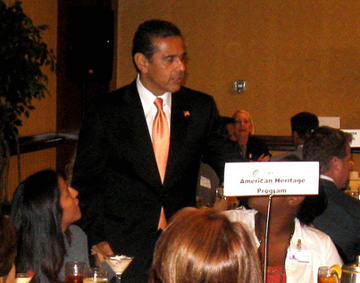 Mayor Antonio Villaraigosa conceded Tuesday that the recession has overpowered Los Angeles’ best efforts to hang onto jobs. It will likely take ten years for Los Angeles to offer the same number of jobs it did before the 2008 recession. But he’s confident in the city’s ability to capitalize in the future.
Mayor Antonio Villaraigosa conceded Tuesday that the recession has overpowered Los Angeles’ best efforts to hang onto jobs. It will likely take ten years for Los Angeles to offer the same number of jobs it did before the 2008 recession. But he’s confident in the city’s ability to capitalize in the future.




